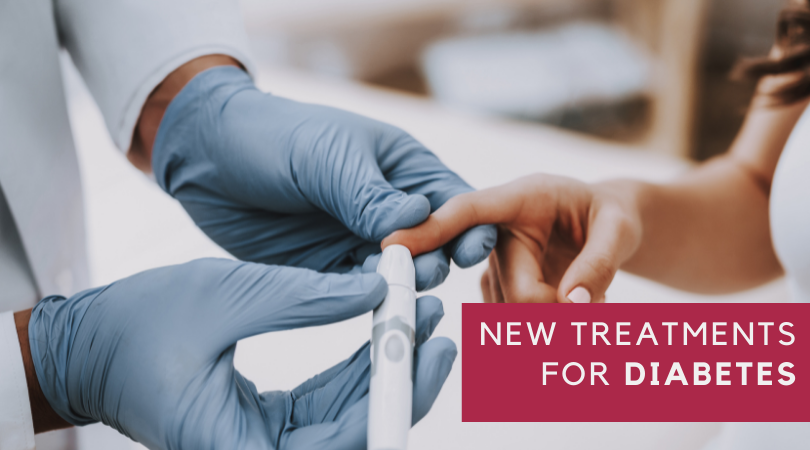Animal Research Leads to Potential New Treatments for Diabetes
Posted on
More than 37 million people in the United States have diabetes, which is the seventh leading cause of death in the country and is associated with an increased risk of heart disease, stroke, high blood pressure, kidney damage, liver disease, and several types of cancer. New preclinical studies show promise as potential treatments for both type 1 and type 2 diabetes.
 Treating Diabetes with Ultrasound
Treating Diabetes with Ultrasound
A new study has found a drug-free way to treat type 2 diabetes, which accounts for 90% to 95% of all diagnosed cases of diabetes.
A team of researchers led by GE Research, including scientists from Yale School of Medicine, UCLA, and the Feinstein Institutes for Medical Research, were able to use short bursts of ultrasound to lower insulin and glucose levels in three different animal models: mice, rats, and swine.
Researchers used a type of highly targeted ultrasound pulse called peripheral focused ultrasound stimulation (pFUS) to stimulate specific nerve endings in the liver. The study found that three minutes of pFUS per day was effective in stabilizing blood glucose levels in the diabetic animal models.
The team is now testing the method with a group of human volunteers with type 2 diabetes. Preliminary results of human trials are expected in early 2023.
Targeting Type 2 Diabetes with Gas
Researchers at the University of Alabama at Birmingham have discovered a new therapy that counteracts obesity and type 2 diabetes in mice fed a high-fat diet.
The therapy is based on the sustained release of nitrous oxide, which works to relax the inner muscles of the blood vessels. The research team developed a gel that releases a burst of nitrous oxide in the first 24 hours, followed by a sustained release of lower levels of the gaseous chemical over the next four weeks.
To test the treatment, researchers injected the gel subcutaneously into mice every two weeks for 12 weeks. The mice were fed a high-fat diet to induce obesity and insulin resistance.
At the end of the 12-week test period, the mice that had received the nitrous oxide-producing gel had gained 17% less body weight compared to control mice, and showed improved glucose tolerance as well as some other positive effects, including better cerebral blood flow and spatial learning ability.
A New Drug for Diabetes Treatment
A new drug molecule could be used as a treatment for diabetes. The molecule, called PK2, was discovered by a team of researchers at the Indian Institute of Technology-Mandi, and works by triggering the pancreas to release insulin.
Even better, unlike existing diabetes drugs, which must be administered via injection, PK2 is rapidly absorbed in the gastrointestinal tract, so it can be taken orally.
In tests with mice, PK2-treated animals saw a six-fold increase in insulin levels compared to the control group. In addition, PK2 was able to prevent or even reverse the loss of beta cells, which are essential for insulin production, which means it could work as a treatment for type 1 diabetes as well as type 2.
Managing Blood Glucose with Electromagnetic Fields
Researchers at the University of Iowa have identified a potential diabetes treatment using static electric and magnetic fields, which could lead to a noninvasive way of managing blood glucose levels in people with diabetes.
After exposing mice to electromagnetic fields (EMFs) for short periods, researchers found that the mice showed reduced blood glucose levels and a normalized insulin response. The team found that administering EMFs affected the blood sugar levels of three different mouse models of type 2 diabetes, and the mice showed normal blood glucose levels after repeated exposure to EMFs.
After its successful result with mice, the team tested EMFs with human liver cells and saw an improvement in insulin sensitivity, which could mean the therapy may be effective in humans.
New Compounds to Fight Diabetes
Researchers at Washington University in St. Louis have developed compounds that can treat diabetes by enabling the pancreas to improve insulin production and increase the body’s ability to remove sugar from the bloodstream.
In tests with mouse models of diabetes, the initial compound, called SN-401, worked to modulate the SWELL1 protein that is a hallmark of metabolic syndrome, a group of conditions that includes type 2 diabetes, high cholesterol, excess body fat, and nonalcoholic fatty liver disease.
While SN-401 reduced blood sugar in mouse models of diabetes, it did not significantly reduce blood sugar in healthy mice, which is the case with some other types of diabetes medications.
Researchers at NYU came up with an experimental compound that targets diabetes in a different way—not by lowering blood sugar, but by blocking the cell death, inflammation and organ damage common in type 1 and type 2 diabetes.
In tests with mice models of diabetes, the new compound, called RAGE229, blocked a protein called RAGE from causing inflammation that injures the heart and kidneys and impairs the healing of diabetic wounds.
In the last 20 years, the number of U.S. adults diagnosed with diabetes has more than doubled, and the disease is costing Americans an estimated $327 billion each year in medical costs and lost wages. With the help of animal research, scientists are developing potential new treatments that are more affordable, less invasive, and more effective.